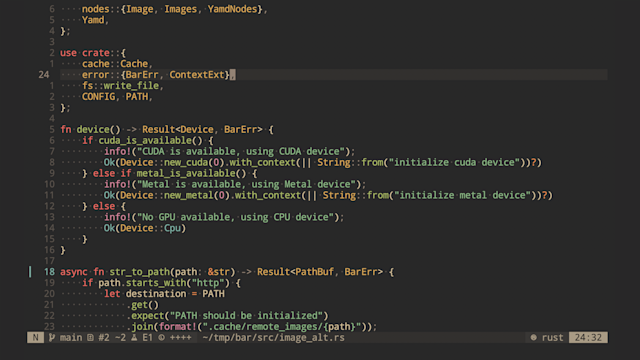
Look ma, NO JS!
I rewrote my blog without any JS.
I have been doing JS full-time/stack for over 9000 fifteen years. I did a few IPTV apps for various platforms and
a dozen websites in those years. I have solved every front-end problem with React for the last ten years. Since then,
the web platform has evolved so much that a usual website does not need JS, and you are looking at the proof of that
statement.
I also have some strong opinions on the direction that Vercel pushes the React ecosystem, which may end up in a separate post. Spoiler alert! That direction sucks.
In the process of rewriting this blog, I produced a few artifacts which may be interesting.
#YAMD
Yet another markdown document (flavor) implemented in Rust markdown to Serde serializable tree of nodes parser.
I thought about parsing markdown as an easy task. I was so naive that on version 0.2.0, I wrote, It is ready to poke
around. There are no significant API changes expected. in the readme file. That was fixed only at 0.10.0.
I kept notes while implementing it Yamd notes. I should do it (notes) more often.
The following steps are implementing a proper lexer, introducing escape sequences, tree-sitter, etc.
#Cloudinary Rust client
That’s not a new crate, but I added some stuff to it, and to my surprise, other people did a few pull requests. There is still a long way to a release, but we are getting there.
Implementing it I got a few good insights on how image transformations API should look like. I will need to implement some of those in BAR.
Here is my Cloudinary referal link. Every registration is expanding my free tier, so I can post more cat photos.
Thank you.
#BAR
Static website generator. Every web developer should write one, right?
The idea is simple. Read some files, render that data as HTML, and save those HTML files to the specified folder. But then, you do not need just any files. They must be in a suitable format. That’s why Yamd. You also need machinery to handle static files, feeds, etc.
Then, you need to find a template engine. From the beginning, I wanted to be able to render different templates. That
requirement alone significantly limited my options. All nice rsx stuff was out of the picture because there is no
easy way to include arbitrary rust code after the compilation.
I want a template engine that has the following:
- A way to expose custom API to the template.
- Nice way to define components because I want to structure my template code so it does not suck right away.
- It should be as close to the resulting HTML as possible.
- Tooling: tree-sitter, type checking, linter, prettier, etc.
Ultimately, I chose Tera mainly because exposing BAR API to the template is relatively easy. Developing a theme with it reminded me of the old days of doing PHP and Smarty. I would consider moving to another template engine if I find something better. Also, version 2 of Tera is in progress, but I haven’t read anything yet.
Anyway, here is the first template for BAR - Hamon.
Another adventure is code highlighting. I chose Syntect to do the job. In the middle of integration, it turned out that they do not support TypeScript. I spent some time getting around it, but now, if you already use or are planning to use Syntect and need Typescript support, here is the way to do it Syntect SyntaxSet with Typescript support.
I have many ideas on how to improve the whole BAR situation: docs, git integration, webhooks for automatic site rendering, partial rerendering, comments, etc.
So yeah, come and build some websites with BAR.
#Serve
Simple HTTP(S) server for static files. At some point, I needed a tool to serve the files that BAR produced. I reached out to the familiar Nginx but then wrote a simple Axum-based Rust program that did the job. The source code of the first version was smaller than the Nginx config would be. The current version supports TLS and is still very simple. I haven’t done any benchmarks, so I do not know how good or bad it is. But it did serve this particular page and did it well.
Side note: Jeez, this whole HTTPS stuff nowadays is so easy to do. I spent a maximum of 10 minutes getting Certbot up and running.
I like the mantra of Rust dev:
- make it work
- make right
- make it fast
All pieces of that project are in the first stage. There is a lot of stuff that I am not proud of. But it works and can be improved.
The main Rust related surprise is how easy async stuff is. Yes, there is nothing extra complicated, reading some files and sending some requests. But I read so many articles about how hard async in Rust is that I was expecting much more hustle.
Overall I am happy with the result. I will use tools, and knowledge that I got from this project in the future.


